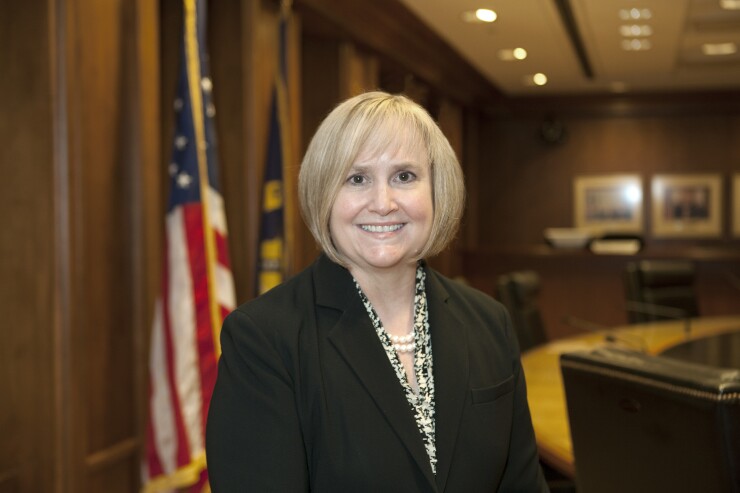WASHINGTON — Regulators are focusing on sale incentive programs in the wake of the Wells Fargo fake account scandal last year, but are also trying not to drop the hammer too hard, a panel of agency officials said Tuesday.
“We understand that all of you use and need incentives programs to incent the type of behavior that you want to see out of your employees, but we also want to see that you’re adopting appropriate compliance management systems” and manage risk that might cause harm to consumers, said Chris D’Angelo, associate director for supervision, enforcement and fair lending at the Consumer Financial Protection Bureau.
Speaking alongside D’Angelo at the American Bankers Association conference, Toney Bland, senior deputy comptroller at the Office of the Comptroller of the Currency, added that sales incentives have "been a big focus at the OCC over the past six months, especially for midsize and large banks, so generally those in the $20 [billion] and $30 billion” asset size and higher.

“The primary focus is on consumer, small business and then activities that may take place in the wealth management areas,” Bland said. “What types of rigor do institutions have around handling employee complaints, also consumer complaints and how well are those tracked and recorded up through the organizations?”
Turning to other subjects, D’Angelo said that the CFPB is still seeing “inconsistent” adoption of the CFPB mortgage servicing rules “particularly in loss mitigation areas” and that more work needs to be done to “improve accuracy in the consumer reporting system.”
Maryann Hunter, deputy director for bank supervision and regulation at the Federal Reserve Board, highlighted what the central bank has done to reduce regulatory burden and make sure heightened expectations that apply to the largest institutions don’t trickle down to community banks.
“Sometimes it’s the incentives the examiners have. They want to share what they have learned from, say, another institution and/or to make sure that they are doubly rigorous and not missing something,” Hunter said.
One way the Fed is addressing the problem is by issuing separate guidance based on an institution's asset size and doing separate training for community bank and big bank examiners so that small institution examiners are “not even hearing about” some of the heightened expectations.
The Fed is now offering to do off-site reviews of loan files if the bankers make the requests, she said.
Doreen Eberley, director of the division of risk management supervision at the Federal Deposit Insurance Corp., said the agency is piloting a similar product so FDIC examiners can safely access loan files for off-site review.
“All of us are looking at ways that we can make our examination program as burdenless as possible,” Eberley said. She added that the FDIC is seeing more interest in de novo banks after reducing the period of enhanced supervisory standards from seven years to three and holding meetings for interested parties at its regional banks.
“We are seeing an uptick in de novo activity across the country and we have several applications in the process right now,” Eberley said.
In response to questions, Hunter pointed to efforts by lawmakers and others to tie bank supervision to banks' activities rather than asset size.
“Tailoring regulation to a business model becomes very tricky, so at this point, the asset size is the primary method” to determine how to regulate a bank, Hunter said.
“It is a clear line," Hunter said. "It’s easy to know whether or not the regulation applies. I think when you get into the business model one of issues or concerns … is exactly how much of that activity … and how do you know how to draw those lines.”
Bland said that many of the statutes governing regulations use asset size, but that it’s not always the best measure.
“The bright lines on asset size can be somewhat of a misnomer," he said, "because you may have a bank that, say, is over $10 billion, but it is really a community bank for all intents and purposes but is subject to all the things that the law says that you have to do over $10 billion.”
“I think all the regulators have said we really need to make distinctions between how the banks operate," Bland said. "One of the things that we are challenged by and continue to focus on is examiners applying their judgment.”





